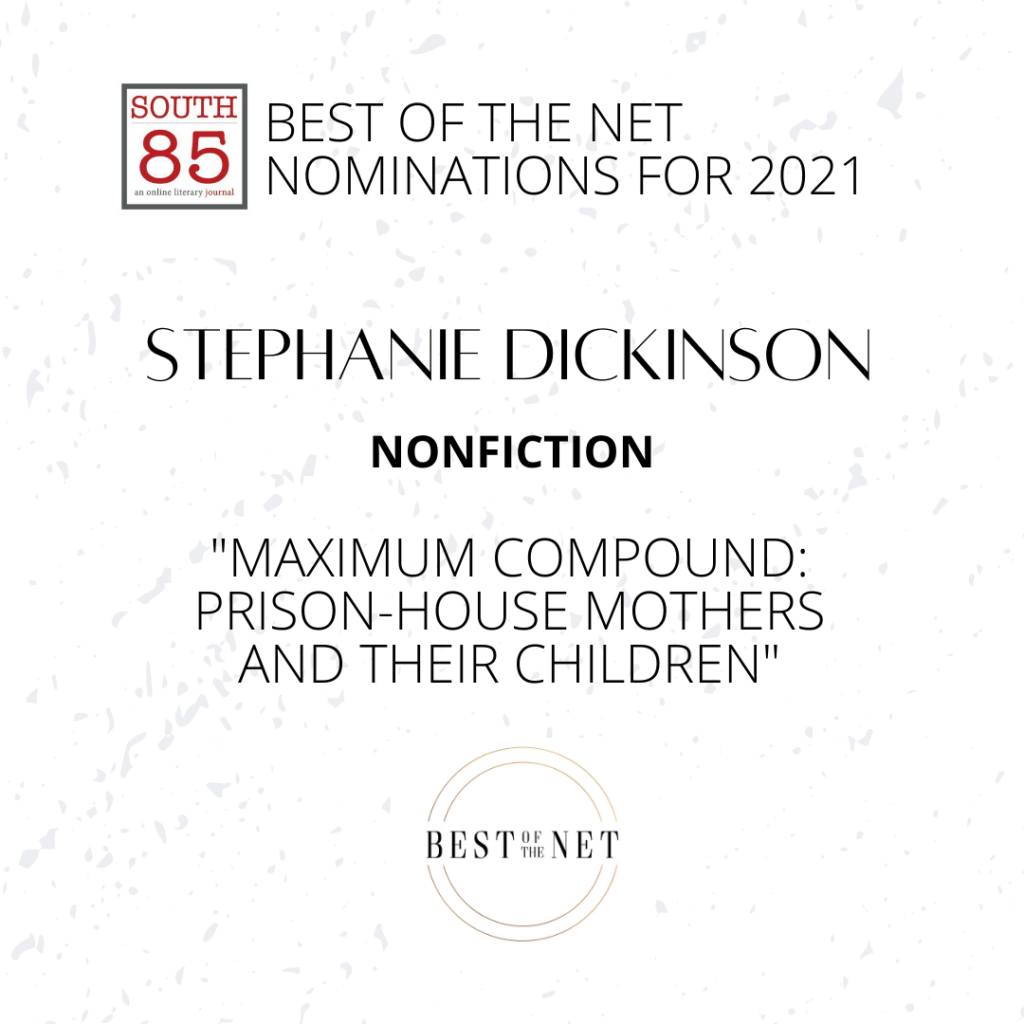
Tag Archives: poetry

2022 Pushcart Nominations
The editors of South 85 Journal are pleased to announce this year’s Pushcart Nominations:
“Yellow Bird” by Shannon Bowring (flash fiction)
“Paraiso” by Donna Obeid (flash fiction)
“El Roca” by Hayley Nivelle (flash fiction)
“Feathers and Wedges” by Karen Kilcup (poetry)
“Elixir for Knowing When to Surrender” by Katherine Seluja (poetry)
“If I get Alzheimer’s – Instructions for my Wife” by Justin Hunt (poetry)
Watch for the December 15th Issue to read these winning works and more!
High Noon at the Hopi Gas Station
John Nizalowski
Reservation dogs
of uncertain breed
sleep in the gas
station parking lot.
A stiff hot wind
blows empty packs
of Camels, Hershey
bar wrappers, and
an empty Coors can
across the rippling tar.
Low, flat-bottomed
cumulous clouds rest
on the sky’s glass pane,
reflecting the red sands
of the desert below.
To the south, ancient
stone cities stand atop
narrow bluffs and solid
mesas. Old priests with
parrot feather staffs
celebrate deep, dusty
time in secret kivas.
Every day is a god,
each star a prayer.
While here at the station,
the register dials up the
cost in digital numbers –
99 cent Coke, three
dollars in corn chips,
and twenty-five in
gasoline – the smell
of colonial commerce.
 John Nizalowski is the author of four books: the multi-genre work Hooking the Sun; two poetry collections, The Last Matinée and East of Kayenta; and Land of Cinnamon Sun, a volume of essays. Nizalowski has also published widely in literary journals, most notably Under the Sun, Weber Studies, Puerto del Sol, Slab, Measure, Digital Americana, and Blue Mesa Review. Currently, he teaches creative writing, composition, and mythology at Colorado Mesa University.
John Nizalowski is the author of four books: the multi-genre work Hooking the Sun; two poetry collections, The Last Matinée and East of Kayenta; and Land of Cinnamon Sun, a volume of essays. Nizalowski has also published widely in literary journals, most notably Under the Sun, Weber Studies, Puerto del Sol, Slab, Measure, Digital Americana, and Blue Mesa Review. Currently, he teaches creative writing, composition, and mythology at Colorado Mesa University.
Evening in Haidar’s Basement
Marlin M. Jenkins
When I give him that look, he asks why I think it’s weird for him to rap along with the radio. He looks back at his game on the TV as I shake my head, place my hand on his shoulder. We were the first in school to begin to grow beards. We will order pizza with halal pepperoni; he will ask about my mother, what it was like for her to re-marry. My mother has not made Arabic food since she converted and met her husband at church. His mother rolls grape leaves on the front porch, wet like his gelled hair. She whispers to the neighbors. When he asks his questions, he stares into the hybridity in my arteries. I stare at the hair on his arms, compare the tight curls on my head, the curve of his nose.
 Marlin M. Jenkins was born and raised in Detroit, graduated from Saginaw Valley State University in Michigan, and will be attending University of Michigan’s MFA program this fall. His writings have found homes in River Styx, Yemassee, and Midwestern Gothic, among others. You can find him online at marlinmjenkins.tumblr.com and @Marlin_Poet.
Marlin M. Jenkins was born and raised in Detroit, graduated from Saginaw Valley State University in Michigan, and will be attending University of Michigan’s MFA program this fall. His writings have found homes in River Styx, Yemassee, and Midwestern Gothic, among others. You can find him online at marlinmjenkins.tumblr.com and @Marlin_Poet.
Building Blocks for Home
by Starr Herr
Chipped plaster, termite-infested walls, cockroaches—
that which is worn, desecrated, lived in; ghosts,
overtaken gardens, tilted fences, scattered tool pieces—
that which is overwrought, still growing; tree houses,
sibling truces, midnight pillow forts, mailboxes—
that which we build together, try maintaining; grief,
malicious gods, tsunami aftershocks, gravestones—
that which we dread, yet still want to cling to; cradles,
mothers’ eyes, fathers’ hands, port dock posts—
that which nurtures us, kept us tethered; toy ships,
beached debris, tropical hurricanes, scorched sand—
that which topples, adapts to destruction; moving trucks,
interstate traffic, 80s rock & roll, cardboard boxes—
that which is in motion, sequences go, going, gone.

Starr Herr recently graduated with a BFA Creative & Professional Writing and BA Philosophy at Converse College. She worked on her high school literary magazine staff as editor-in-chief and her college literary magazine staff as a poetry editor.

2021 South 85 Best of the Net Nominations
South 85 Journal is proud to announce the 2021 nominations for The Best of the Net.
The Best of the Net is an annual award-based anthology designed to highlight a diverse collection of writers and publishers using the digital landscape to amplify literary works.
Here are the Nominees…
The nominees South 85 Journal have chosen for this year are writers whose work was published between the dates of June 1, 2020, thru June 30, 2021.
The Best of the Net Nominees for Nonfiction
Congratulations to our nominees.
Click on the name of each nominee to read the story and/or poem.

The Best of the Net Nominees for Fiction
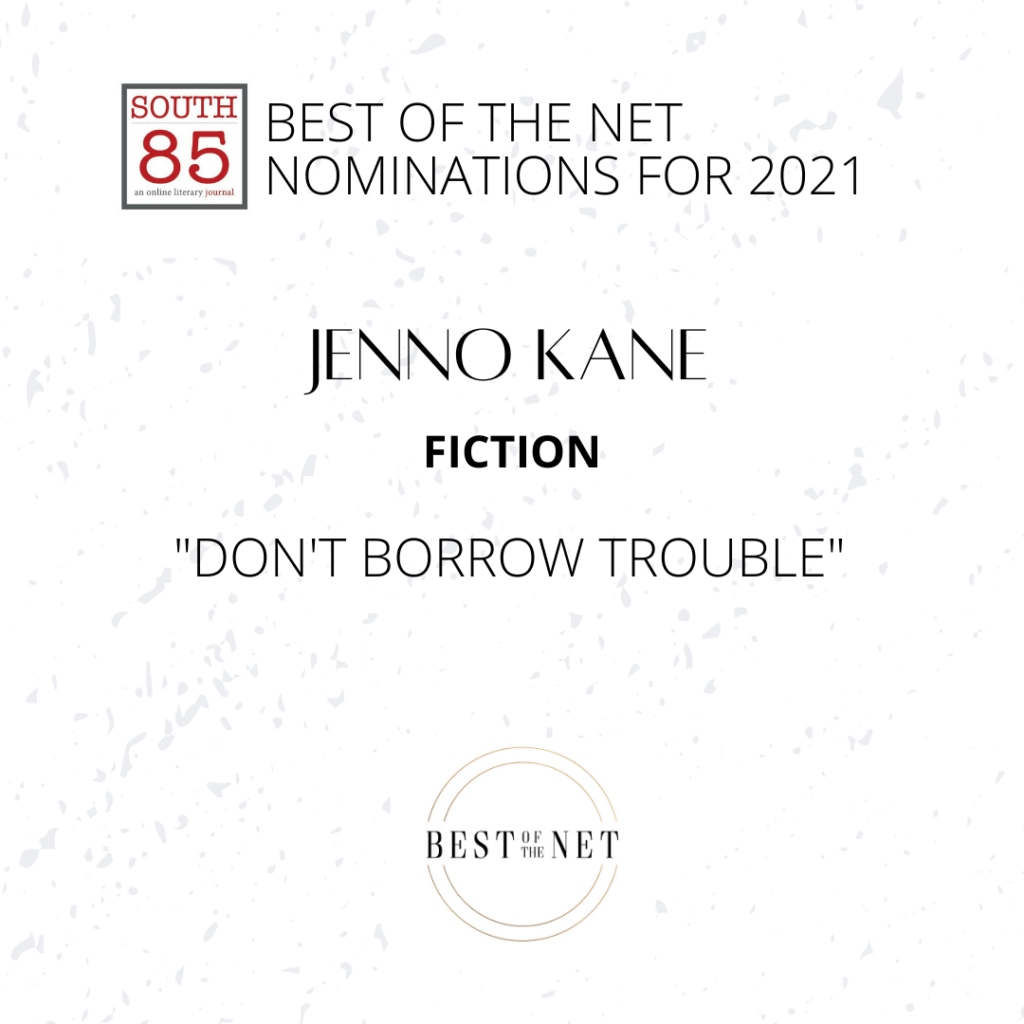
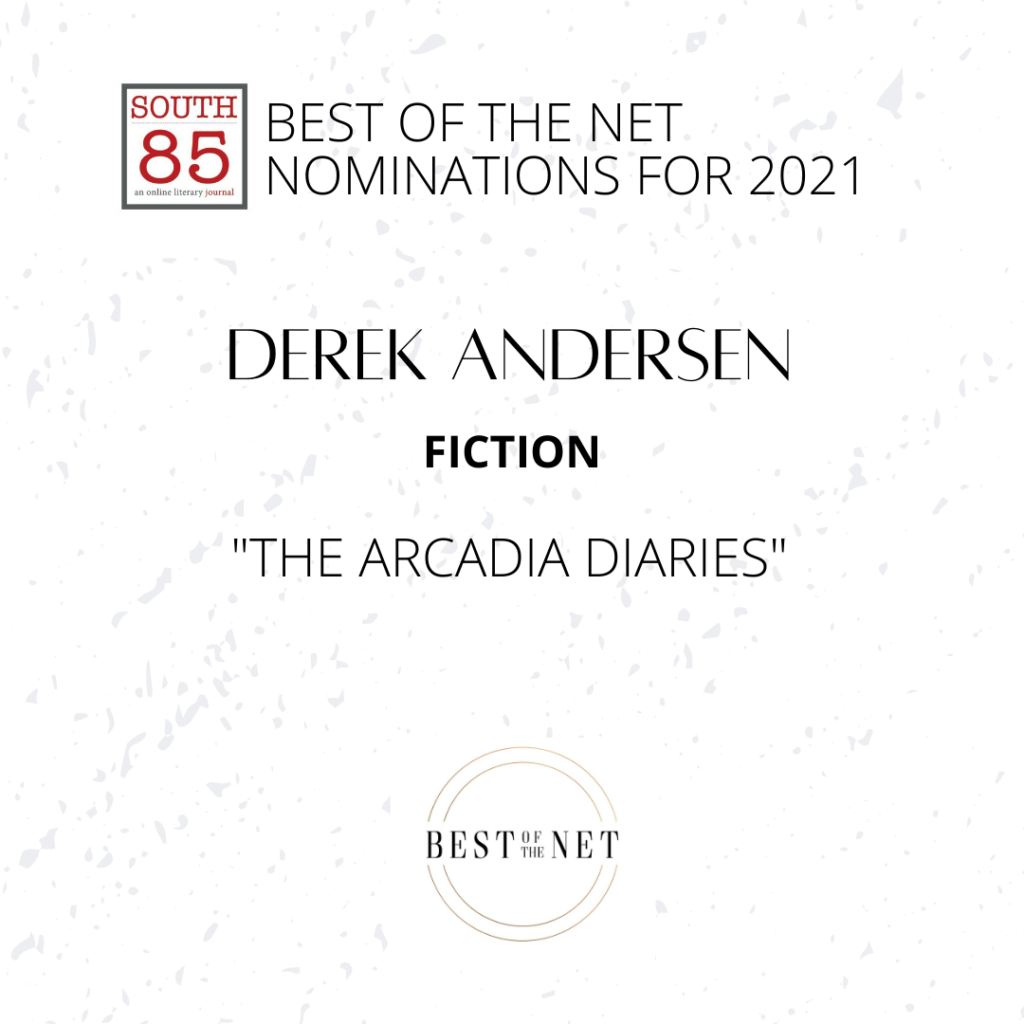
The Best of the Net Nominees for Poetry

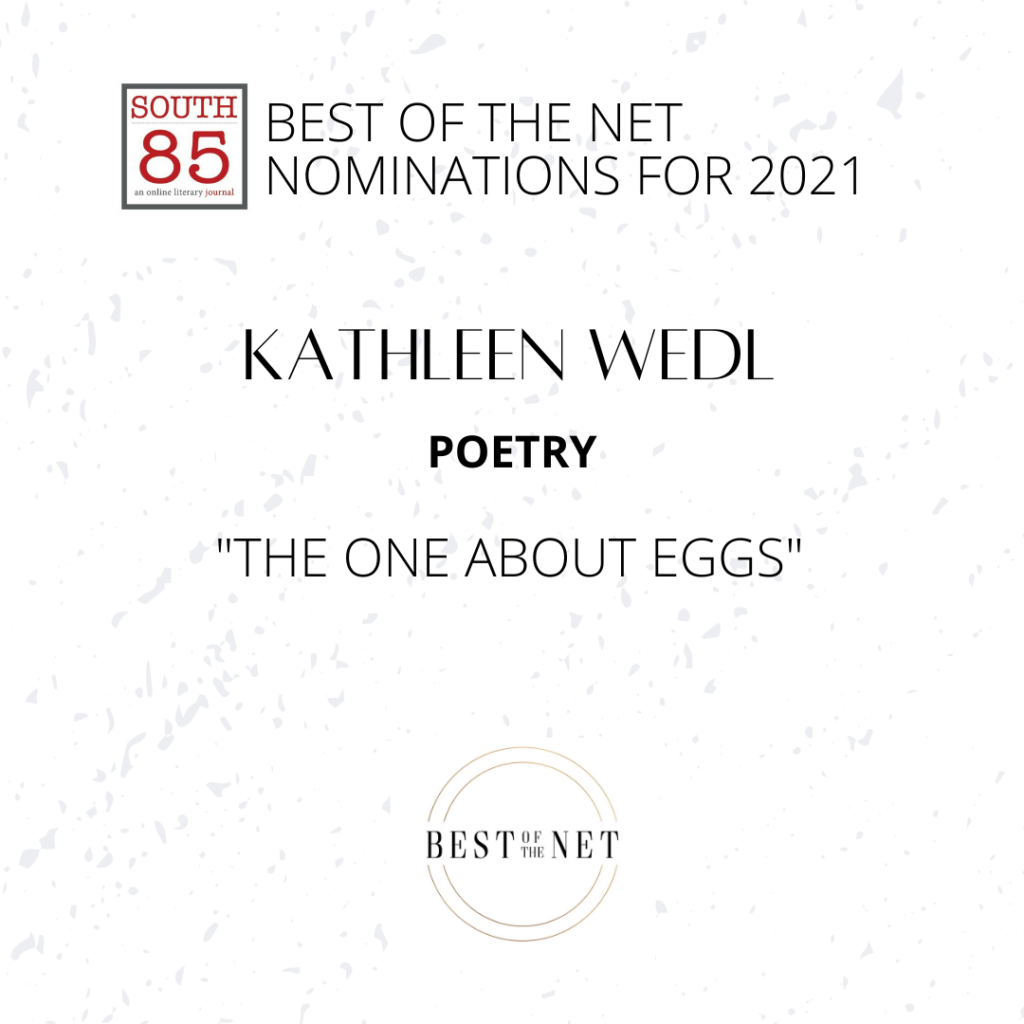
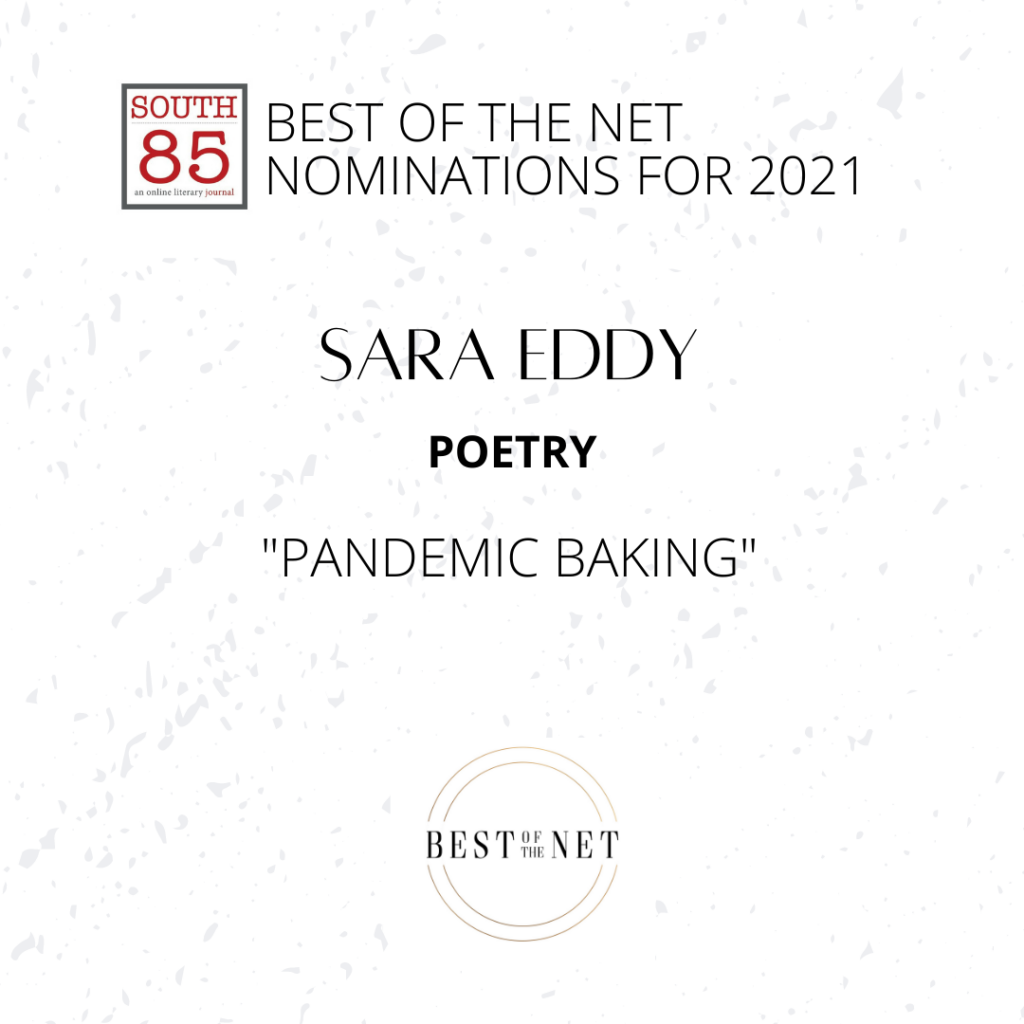

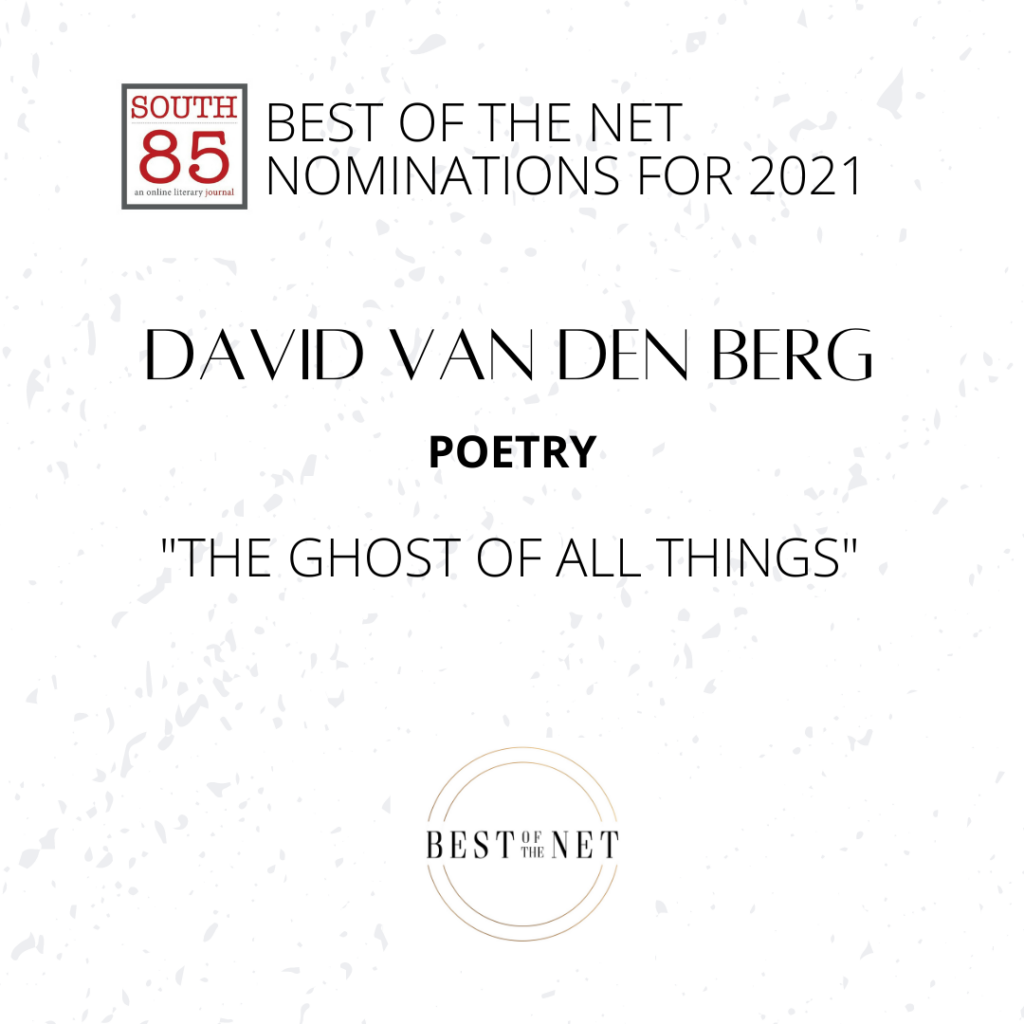

The Best of the Net Submission Guidelines
Journals and presses can submit up to 6 poems, 2 stories, 2 works of creative nonfiction, and 3 works of art. Self-published writers are encouraged to submit with no more than two pieces of literary work of any genre.
All submissions must include the URL of the literary work and a text version sent in a Word or PDF.
The deadline is September 30, 2021.
Winners will be announced January 2022.
Visit The Best of the Net website to submit here.
Questions can be directed to Managing Editor, Anna Black at bestofthenet[at]sundresspublications.com.
The Best of the Net is a Sundress Publications project.

Businesses Need Poets and They Don’t Even Know It
By: Zorina E. Frey
“Poetry and business writing are the Capulets and Montagues…”
Poetry is under appreciated by the business industry. It is not recognized as the staple of rhetoric its serves in our language. It’s overlooked as a hobby and not as the true literary artform it is.
Working as a copywriter, I can’t tell you how many interoffice pings I received from digital marketers and even C-level executives asking me to brainstorm some catch phrase for one of our clients. Being the poet I am, I didn’t hesitate to quickly ping back a list of options for them. It wasn’t until I joined a writing team for another company did I realize when writers aren’t strong poets, coming up with catchphrases doesn’t come naturally.
The Business of Writing Poetry
There is a disconnection between poetry and business writing. So many marketing agencies don’t realize they need a poet to be part of their writing team. Likewise, many poets may not realize their talents are needed outside of academia. Poetry’s carpe diems rhetoric breaks the rules of traditional business writing. On the other hand, business writing’s formal rules seem as though it quells poetry’s creative rhetoric.
Star-Crossed Rhetoric. If That Isn’t Poetry, I Don’t Know What Is.
Poetry and business writing are like two people who hate each other but are secretly in love and neither one of them wants to admit it. It’s as if these two writing artforms come from separate worlds but are essentially one in the same. Poetry and business writing are the Capulets and Montagues—star-crossed lovers destined to be together even though the world wants to keep them apart.
Are we good on the similes and metaphors?
These two literary forms can’t play nice together because of disapproving outside influences in their respected genre. Business writing has its traditional writing rules and poetry has a bohemian existence that thrives in academia. “Both academia and bohemians are perceived to live outside the economic and social systems…” (Gioia 107). However, every television commercial, radio podcast, company social media post, ecommerce product, and even electoral slogans signify a poetic voice.
There is a give and take on both sides. The poet must conform his or her work to traditional styles of writing and business writers need to make room in their rhetoric for the bohemian artform. The payoff—especially for the poet will result in a broader spectrum of professional writing options while businesses benefit from more insightful and rich content that can better appeal to a person’s senses.
Infomercial: Got Poetry?
When I worked as the lead copywriter for a digital marketing agency in Miami, our staff met twice a week for client updates and to discuss creative ideas. In a nutshell, the ideas involved searching for the right string of words to convey a client’s message that had to be clear, concise, and witty. What they were asking for is poetry.
When I worked as a content writer for a restaurant supply company, the team would spend up to 45 minutes agreeing on the right type of wording for an Instagram post. When it came to writing product descriptions for the company’s website and Amazon, the type of verbiage we were expected to produce had to complement the visually appealing product photo. This is also poetry.
When You Find That Writer, You’ll Know
Wouldn’t it then, make sense for employers to take a second look at their writing team, recognize the poets and give them the credit they deserve? Not every writer is a trained poet, and not every poet is a trained writer. There are writers whose skillset is strong with grammar. Another writer might be good at monologue and scriptwriting. Another writer may be strong at research, collecting facts, and reporting them. Then you have the poet who is pretty damn good at descriptive storytelling. For businesses that are lucky enough to have a writer who’s good at all these things, hold on to that writer. Hold on to that writer tight, and never let that person go.
Works Cited
Gioia, Dana Gioia. Ways of Living. Can Poetry Matter? Graywolf Press, 1992

Zorina Frey is an MFA candidate at Converse College from Miami, Florida. She’s published in the forthcoming Chicken Soup for the Soul: I’m Speaking Now, Shondaland, Writing Class Radio, Filter, and Michiana Monologues. Zorina holds a BA in Journalism and a certificate in web design from Indiana University. She also has a literary publishing certificate from Emerson College.
Terms of Endearment: Emotive Diction in Poetry
By Mel Sherrer
What makes a poem captivating? Creating concrete imagery using descriptive language can decidedly make a poem beautiful, but for poetry to be captivating it must do more than make the reader see through the eyes of the poet, it must also manipulate the reader to feel as the poet intends them to feel. Essentially, the question is how can a poem be written to not only entertain, but to affect a reader? The answer lies in diction.
Word choice amplifies descriptive language by adding emotional connotation and context for the imagery presented in a poem. For example, a writer can present the image of a rose to the reader in a poem, which is typically a pleasant image, evoking pleasant sensory experiences, like the sight or smell of roses. A writer can also make choices about the context built around an image using emotive diction. The poet could call it a putrid rose, a woeful rose, or a haunted rose, consequently altering the connotation of a widely recognized symbol.
One notable progression toward emotive diction in poetry happened during the Romantic period of literature, during which poets sought new ways to intrigue both scholars and laymen. Romantics rejected the use of lofty language in poetry, because it created too much distance between the poet and reader for the poems to be relatable and understandable. The solution was to attach human emotions to everyday images. An image or symbol may be singular to a specific place, society, or culture; however, emotions are universal. Crafting poems with careful word choice can bridge the gap between concrete images and emotional experiences.
So how does one go about making a poem both relatable and captivating? The construction of awe, or captivation, evolves from constructing relatable emotional circumstances. As a human race, we may not have concrete experiences in common, but it can be assumed that we have the range of human emotions in common, which is a fount of relatable content.
A great example lies in Wordsworth’s “I wandered lonely as a cloud” in which the image of a cloud is paired with the emotional context of loneliness. Imagery that includes clouds may typically represent symbols such as, sky, lightness, freedom, and tranquility, but with the addition of the adjective “lonely” a cloud becomes a vehicle for more complex emotional representations, in this way a poet can reinvent meaning for images and symbols which have become trite or cliché.
Emotive diction is a safe tactic for the poet to indulge in abstractions in ways that do not risk convoluting the meaning of a poem for the reader. Word choice, rather than imagery, might also be safe a method for poets to experiment with rhetoric, without inadvertently writing a piece that is lofty, or pretentious. Poets can play with phrases like, a miserable sunrise, or a gleeful dumpster, and rely on the emotional connotations of the words misery and glee to ensure the poem is still comprehensible on some level, to the reader.
Every word counts! The extra effort put towards connotation and context is the fundamental difference between a poem which is meant to be spectacle, as with a painting, and a poem which is meant to be experienced. A beautiful poem can transport a reader to a destination, but a captivating poem can make them celebrate, mourn, laugh, weep, or scream upon arrival.
Suggested writing exercise:
Try writing a poem that uses emotive diction to make a concrete image emotionally provocative.
Sources:
“I wandered lonely as a cloud.” The Norton Anthology of English Literature. Ed. M. H. Abrams. Vol. 2. New York: W. W. Norton & Company. 186-187.

#SocLlit: A Twitter Collaborative Poetry Project
Donald C. Welch III
I began my project @SocialLit by writing poems that were exactly 140 characters to make the argument that Twitter functions as a new medium for literature and necessitates unique poetic forms. As a medium, I envisioned Twitter being a space for writers to collaborate seamlessly and create pieces together regardless of where they are physically located. This turned out to be the most difficult part of the project. But rather than try and generate interaction, I kept writing poems and replying to the occasional person who’d tweet to @SocialLit. It became evident to me that while I kept purporting this vision of collaborative writing, I never actually laid out any guidelines for what exactly I meant. I was tentative about defining anything, because I wanted the work to happen organically, but the truth is: nothing can grow if you don’t do some tilling first. So I decided to launch the experiment #SocLlit to test out writing a collaborative poem on Twitter and to provide an example as to how it might be done.
Before beginning the hashtag on December 28th I sent out Facebook messages and emails and posted Facebook statuses asking for support in this project and explaining what I had in mind. American art often idealizes the rugged individual, stubbornly creating something all on their own, but I haven’t found this to be the case. It took my friend Bobby Crawford (@BodaddyCrawfish) to write a response to my initial @SocialLit tweet for the hashtag to really open. #SocLlit never would have been possible without the seventeen people willing to participate, let alone the countless others who shared, retweeted, and promoted the project. People interacted in unexpected ways, like my friend Allison Truj (@AllisonTruj) who basically functioned as co-facilitator by retweeting or favoriting every piece written and keeping the hashtag active throughout the course of the day. I consider #SocLlit a huge success, for the simple reason that people did, in fact, write and work together towards making a single piece of poetry.
There were some small blips, such as people tweeting #soclit instead of #SocLlit. This was an oversight on my part, as the two Ls are difficult to read together. If I noticed people tweeting from #soclit though, I simply @tweeted them with #SocLlit so that the conversation would appear in the thread. I chose #SocLlit because #sociallit, corresponding to my project’s handle, is currently taken by a new Stanford class and since twitterspeak is an integral part of the project, I wanted to use Social Literature in twitterspeak. The capital L at the end of “social” represents the phonetic spelling of the word and the “literature” portion stands alone as lit. In the future I’ll pick a clearer hashtag, but for this experiment I was just excited to find one that fit the project title and that no one else had used. I also think that further research into the nitty-gritty aspects of Twitter will be beneficial for future efforts, learning about Twitter’s search algorithms and how exactly private and public accounts interacting affects the visibility of tweets will help smooth out the process.
Initially I imagined the collaborative writing being done through @tweets, where one long series could be read as a conversation on Twitter, but it was soon made apparent to me that this wouldn’t be the best way to approach it. @Tweets are visible to fewer overall Twitter users than hashtags. Additionally, most of the tweets were directed at my accounts rather than at other people using the hashtag, causing more leg work on my end to try to connect users. The Twitter handles, once they started including multiple people, became unwieldy, limiting the number of characters a user could write.
The future of this project will use hashtags like titles or themes, so that every individual can contribute to the poem itself simply by using the hashtag. The organizing method of Twitter, placing more popular tweets in a hashtag first, can become a strength in this format allowing for the creation of a poem that is fluid, always shifting depending on which tweets are favorited and retweeted by viewers, truly giving readers control over the interpretation of a text. In #SocLlit I already saw this happening on a small scale and I would like to further investigate how it affects the direction of the poems overall, as what I initially thought would be linear turned out to be more of a treelike progression. This hashtag use will also open up an opportunity for creating micro poems within the greater poem of the hashtag. While @tweets were an unsuccessful tool for unifying numerous people, if a user reading through finds another writer whose work they admire, then @tweets can be used to contribute to the poem on a personal level, as if the two users are creating the subtext of the piece by exploring portions that are particularly evocative to them. I would also like to use the hashtags as part of a larger digital narrative, maybe linking them across different platforms, since hashtags can be used synonymously on Facebook and Instagram, as well as Twitter.
The fact that #SocLlit was a success invites the possibility for a global poem. The people who participated crisscrossed North America, tweeting from Calgary, Alberta to Phoenix, Arizona and Portland, Oregon to Boston, Massachusetts. As a project, @SocialLit is about uniting people through poetry and while the first collaborative effort stayed on this continent, I hope future poems will one day connect people all over the world. I want people to write together so that we can better understand each other. There’s a willingness to discuss the ways our world is shrinking because of technology and the problems that arise from it, but people often neglect to address the potential solutions there as well: maybe the disjointed nature of twitterspeak will help us discover commonalities in disparate languages, maybe social media sites like Twitter can offer different cultures a candid glimpse into each other’s daily lives, maybe a few people writing together on the internet from warring countries can end a violent conflict. For now, the immediate hope is that people will start trying out #SocLlit on their own, coming up with hashtags and writing together, and in doing so continue the ancient practice of using poetry as means of connecting to one another.
 Donald C. Welch III currently lives in Brooklyn, NY, but started writing in Mooresville, NC. His project @SocialLit explores new forms of poetry and collaborative writing derived from Social Media. His work has appeared or is forthcoming in Passages North, Haiku Journal, War, Literature & the Arts, Foliate Oak Literary Magazine, The Emerson Review, among other journals. South85 Journal published his poem, “Finding Myself in a Wendy’s in Clyde, North Carolina,” in its Fall / Winter 2014 issue. His collection of children’s poetry Who Gave These Flamingos Those Tuxedos? was published by Wilde Press.
Donald C. Welch III currently lives in Brooklyn, NY, but started writing in Mooresville, NC. His project @SocialLit explores new forms of poetry and collaborative writing derived from Social Media. His work has appeared or is forthcoming in Passages North, Haiku Journal, War, Literature & the Arts, Foliate Oak Literary Magazine, The Emerson Review, among other journals. South85 Journal published his poem, “Finding Myself in a Wendy’s in Clyde, North Carolina,” in its Fall / Winter 2014 issue. His collection of children’s poetry Who Gave These Flamingos Those Tuxedos? was published by Wilde Press.
